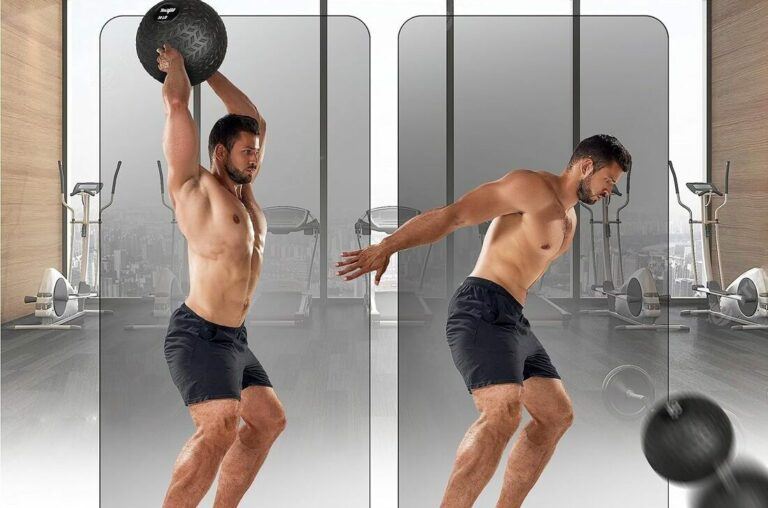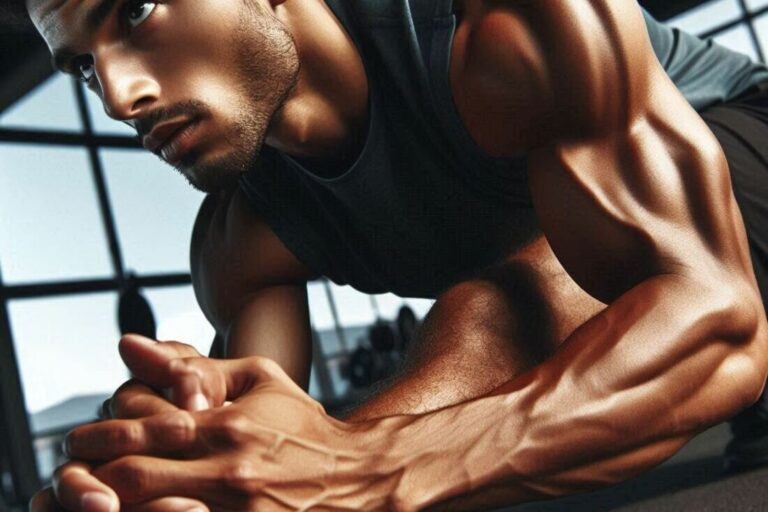Have you ever watched a star athlete make an impossible play look routine?
A diving catch in baseball, a lightning-fast steal in basketball, or a game-saving block in volleyball – these moments of brilliance often hinge on one crucial factor – reflexes.
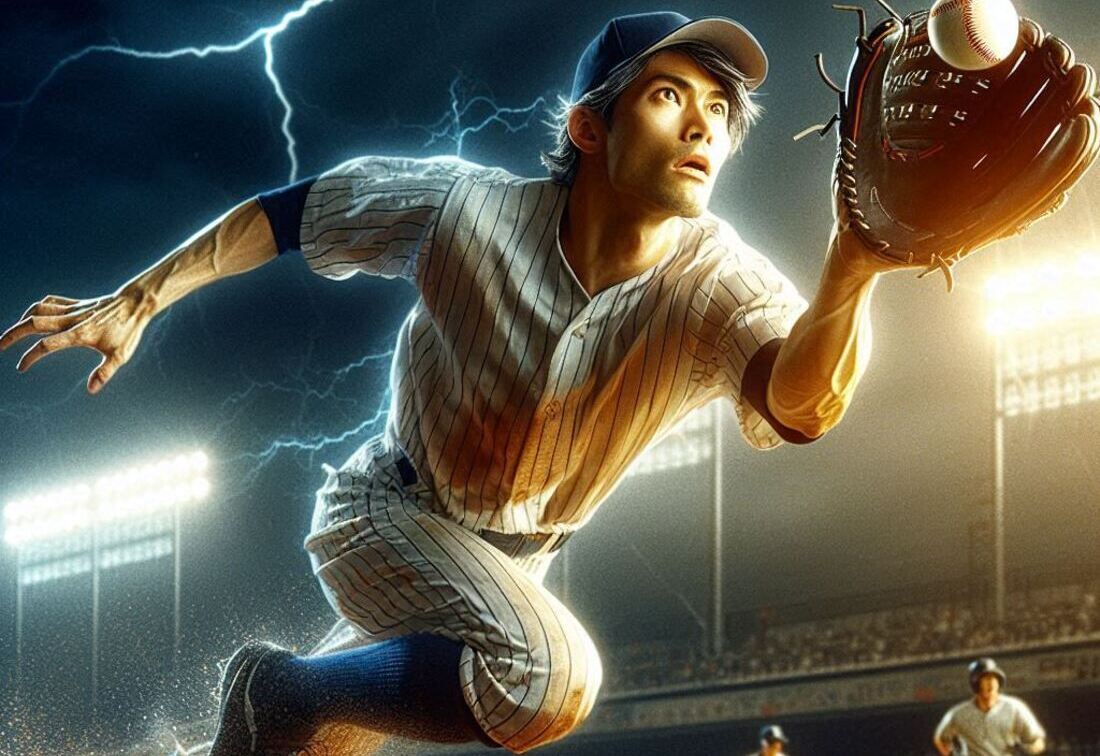
But reflexes aren’t just for superhuman athletes.
They are the foundation of all athletic performance, impacting everything from reaction time to agility and coordination.
Whether you’re a seasoned competitor or a weekend warrior, honing your reflexes can give you that extra edge you need to take your game to the next level.
This ultimate guide dives deep into the world of reflex training for athletes.
We’ll explore the science behind reflexes, their impact on athletic performance, and most importantly, provide actionable strategies to improve your own reactions.
We’ll also unveil some of the top reflex training products available on Amazon to help you supercharge your workouts.
Key Takeaways
- Reflexes are involuntary responses to stimuli, playing a vital role in athletic performance.
- Different types of reflexes exist, each crucial for specific athletic actions.
- Reflex training incorporates drills and exercises designed to improve reaction time, agility, and coordination.
- A well-structured reflex training program can benefit athletes of all levels and sports.
- Proper nutrition, recovery techniques, and choosing the right equipment are essential for maximizing reflex training gains.
Why Reflexes Matter in Sports?
Imagine yourself on the basketball court.
Your opponent fakes left, then drives right.
In a split second, you need to react, change direction, and contest the shot.
This complex sequence relies heavily on your reflexes.
Reflexes are involuntary responses triggered by the nervous system in response to a stimulus.
They are essential for various athletic movements, including:
- Reaction time: How quickly you can perceive and respond to a stimulus, like a whistle blow or a change in direction by your opponent.
- Agility: Your ability to change direction and adjust your movements quickly.
- Balance: Maintaining stability and control during rapid movements.
- Coordination: Seamlessly integrating different muscle groups for efficient actions.
Studies have shown a clear link between faster reflexes and improved athletic performance.
For example, research published in the National Institutes of Health (NIH) (.gov) found that athletes with better reaction times performed significantly better in agility tests [1].
Here’s a breakdown of how reflexes benefit specific sports:
- Baseball: Faster reflexes allow outfielders to react quicker to fly balls and make diving catches.
- Basketball: Sharper reflexes enhance reaction time to steals, improve dribbling skills, and enable quicker defensive plays.
- Soccer: Superior reflexes help goalkeepers react to shots and allow field players to anticipate opponent movements for better positioning.
Unveiling the Science Behind Reflexes
Reflexes operate through a complex neurological pathway called the reflex arc.
Here’s a simplified breakdown of the process:
- Stimulus: An event triggers a sensory receptor (eyes, skin, etc.).
- Sensory Neuron: The receptor transmits a signal through a sensory neuron to the spinal cord.
- Motor Neuron: In the spinal cord, a motor neuron receives the signal and transmits it back to the muscles.
- Muscle Contraction: The muscles receive the signal and contract, generating the reflex response.
There are two main types of reflexes:
- Myotatic Reflex (Stretch Reflex): This reflex helps maintain muscle tone and posture. When a muscle is stretched, it sends a signal to the spinal cord, triggering a contraction in the stretched muscle and relaxation in the opposing muscle.
- Withdrawal Reflex: This reflex protects the body from harm. When you touch a hot stove, the sensory receptors in your skin send a signal to the spinal cord, causing the muscles in your arm to contract and pull your hand away.
Building Sharper Reflexes: Powerful Training Techniques
The good news is that reflexes are not set in stone.
Through targeted training, you can improve your reaction time, agility, and overall coordination.
Here’s a breakdown of effective reflex training techniques with explanations on how to use them and recommended products.
(Note: Links below are affiliate links)
1. Visual Reaction Drills
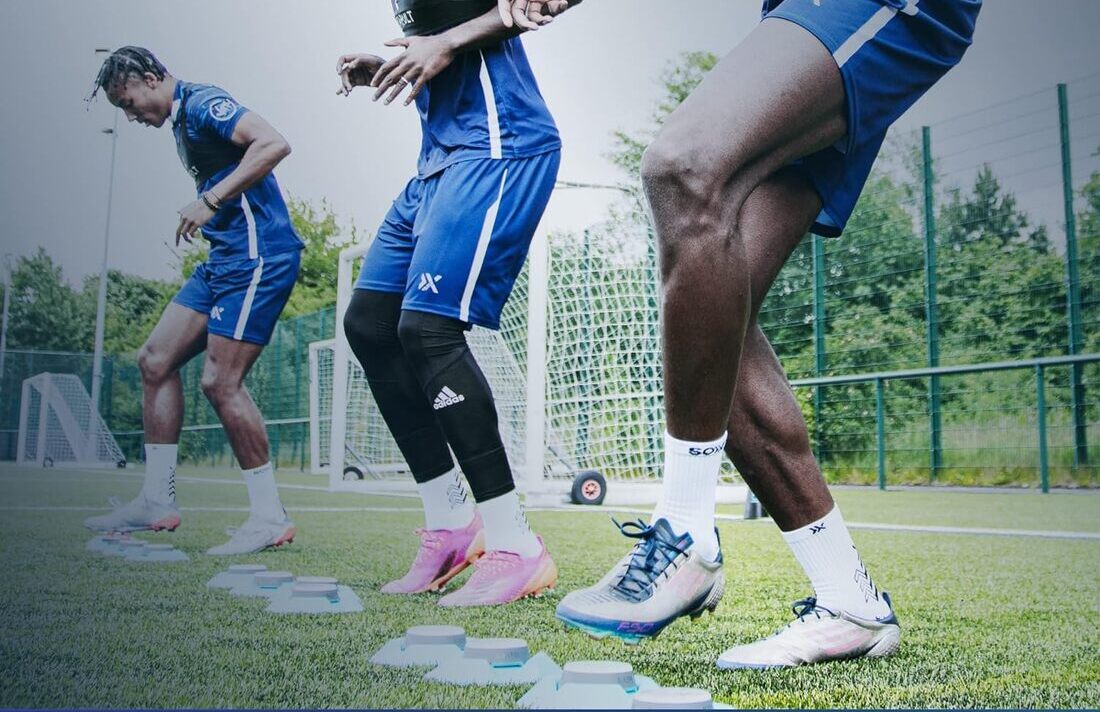
- Products:
- BlazePod Reaction Training: Consider reflex trainers with multiple light bulbs that illuminate randomly. These require quick reactions to follow the light and change direction.
- Tennis Balls: A budget-friendly option! Have a partner throw tennis balls in random directions, and practice catching them or dodging them by quickly shifting your bodyweight.
- How to Use:
- BlazePod Reaction Training: Set up the trainer according to the manufacturer’s instructions. As the lights illuminate at random, react quickly by touching the corresponding button or performing a pre-determined movement (e.g., squat jump) as fast as possible.
- Tennis Balls: With a partner, stand at a comfortable distance. Have your partner throw tennis balls in various directions and speeds. Practice catching the balls or dodging them by moving your feet and body quickly to react to the incoming ball.
2. Auditory Reaction Drills
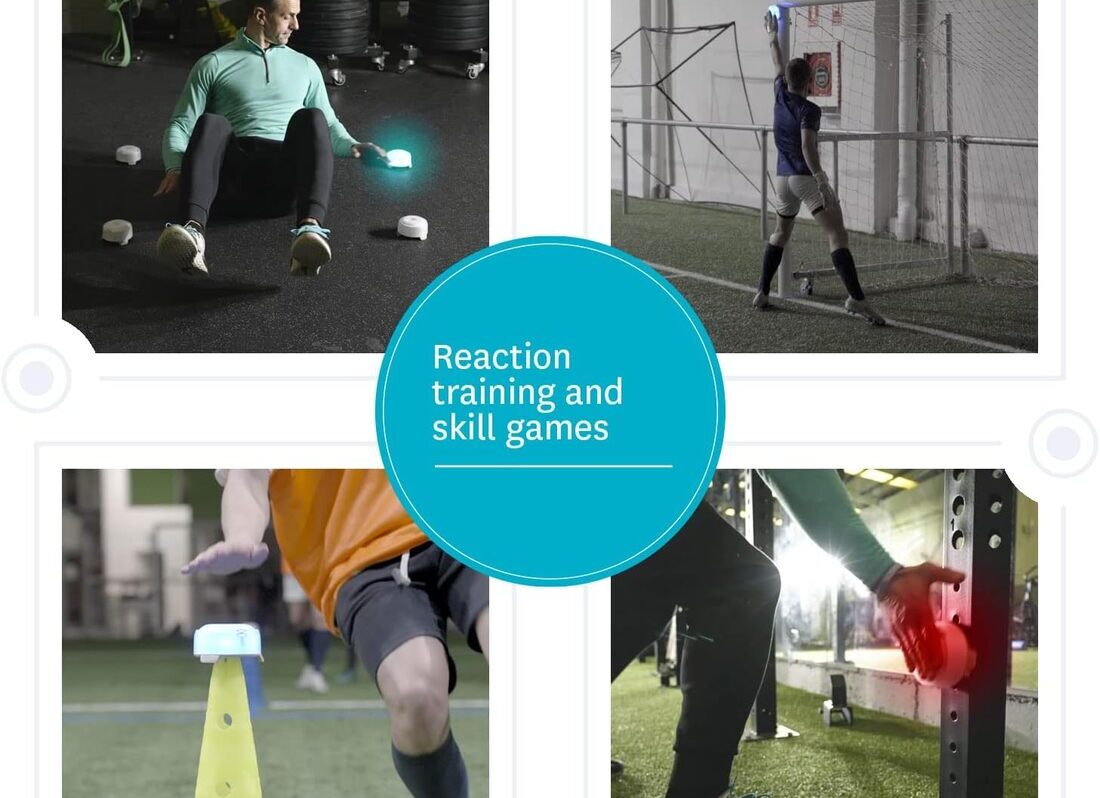
- Products:
- Auditory Reaction Set: A simple and effective tool for partner drills individually or with group sports training.
- How to Use:
- It is a set of reaction lights for sports and cognitive training based on light and auditory reaction. Click on the link to learn more on the benefits and on how to use them.
3. Agility Ladder Drills
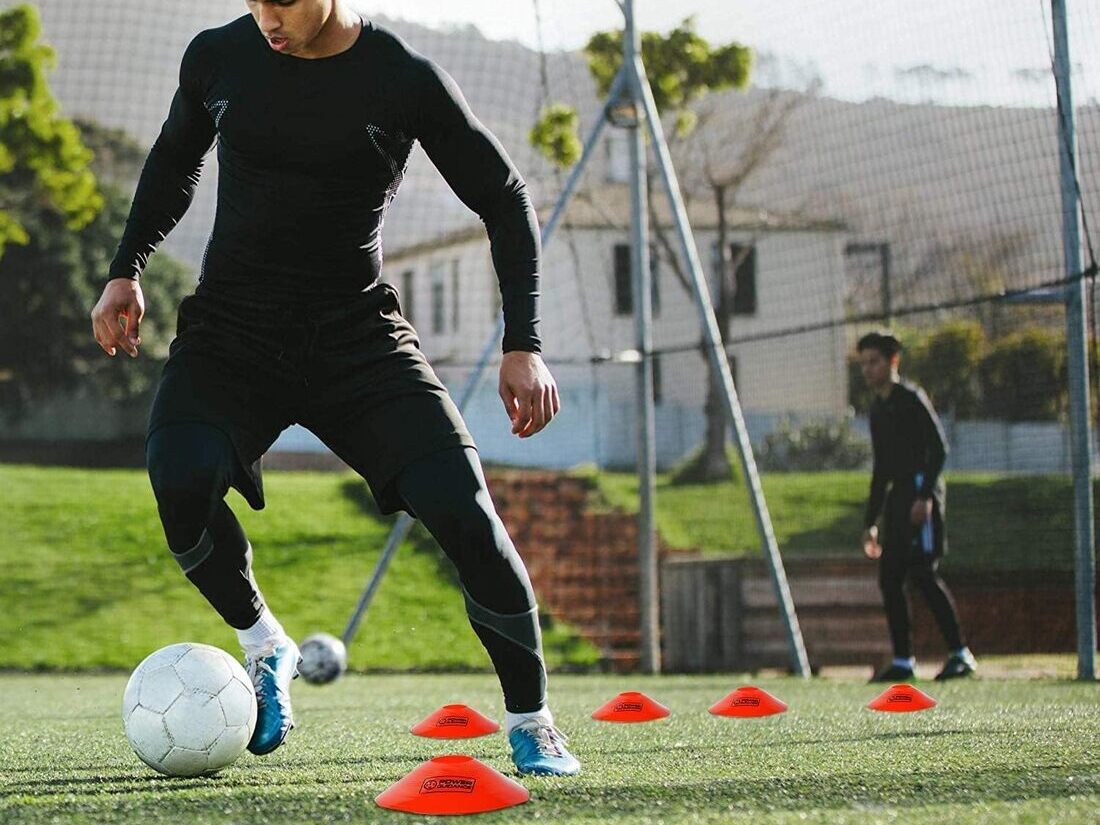
- Products:
- Agility Ladder: Portable and convenient for training anywhere.
- How to Use:
- Lay the agility ladder flat on a clean surface. Here are some sample drills to improve reflexes and footwork:
- Lateral Shuffles: Shuffle side-to-side across the rungs of the ladder, keeping your feet light and moving quickly while maintaining a low center of gravity.
- High Knees: Run across the ladder, bringing your knees up high with each step and focusing on fast foot placement.
- In-and-Out: Move laterally across the ladder, stepping in and out of each rung with each foot, emphasizing quick changes in direction.
- Lay the agility ladder flat on a clean surface. Here are some sample drills to improve reflexes and footwork:
4. Plyometric Exercises
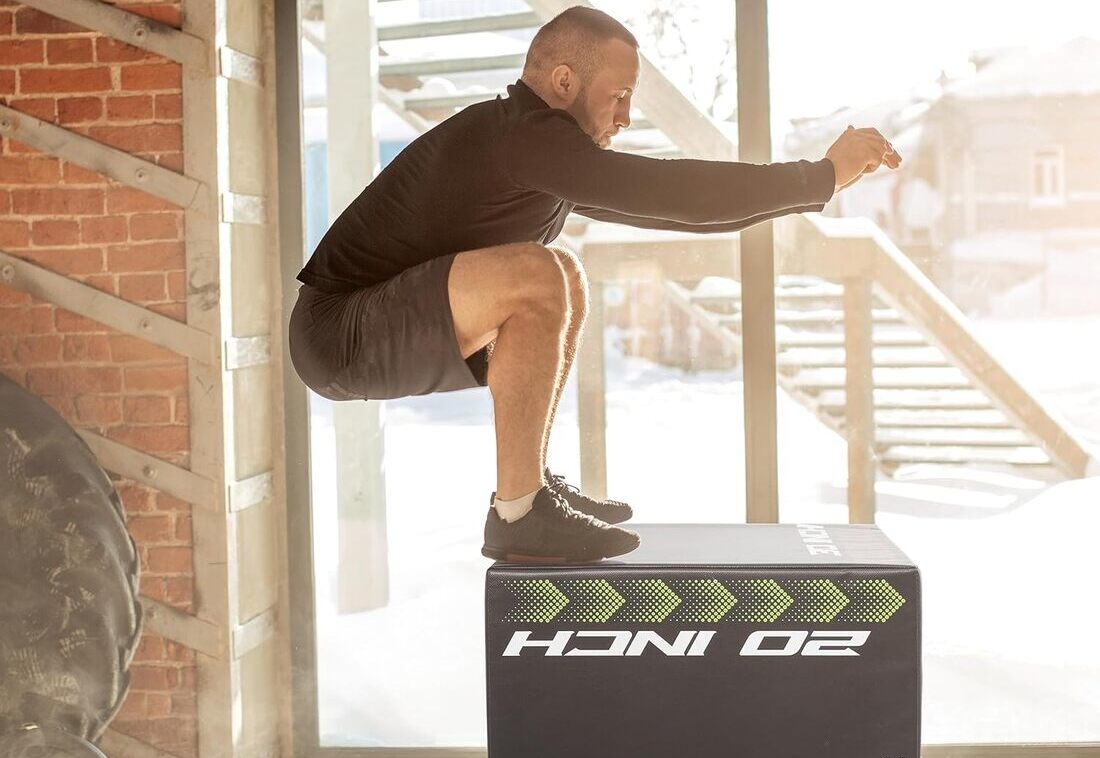
- Products:
- Adjustable Plyo Box: Allows you to customize the height for different exercises and fitness levels.
- How to Use:
- Box Jumps: Start with a low height setting on the adjustable plyo box. Squat down, then explode upwards to jump on top of the box. Land softly with knees slightly bent to absorb impact. Gradually increase the box height as you gain strength and confidence.
Remember: Always prioritize proper form over speed when performing these exercises. Start slow and gradually increase intensity as your reflexes and fitness level improve. Listen to your body and take rest days to avoid injuries.
Here are some additional tips for maximizing your reflex training
- Start Slow and Progress Gradually: Begin with basic drills and gradually increase the complexity and speed as you improve.
- Focus on Form: Proper technique is crucial to prevent injuries and ensure you’re targeting the desired reflexes.
- Incorporate Reaction Training into Your Warm-Up: Dedicate 5-10 minutes of your warm-up to reflex drills to prime your nervous system for optimal performance.
- Make it Fun and Engaging: Choose drills you enjoy to stay motivated and consistent with your training.
- Track Your Progress: Monitor your improvement by timing your responses or using drills with measurable outcomes.
Frequently Asked Questions (FAQs) About Reflex Training:
Q: How long does it take to see results from reflex training?
A: The timeframe for noticeable improvement depends on your initial fitness level and training consistency. However, dedicated athletes can see a difference in reaction time and agility within a few weeks.
Q: Can reflex training help me outside of sports?
A: Absolutely! Sharper reflexes can benefit your daily life by improving reaction time in various situations, potentially preventing accidents or injuries.
Q: Are there any risks associated with reflex training?
A: Like any exercise program, there’s a potential for injury if done improperly. Always prioritize proper form and start slow, especially if you’re new to reflex training.
Q: Do I need any special equipment for reflex training?
A: While some tools like reflex trainers and agility ladders can enhance your workouts, many effective drills require minimal equipment or can be done using household items.
Fueling Your Reflexes: Optimizing Performance with Nutrition
Just like any other aspect of athletic performance, what you eat plays a role in reflex training.
Here are some dietary tips to optimize your reflexes:
- Focus on Whole Foods: Prioritize a diet rich in fruits, vegetables, whole grains, and lean protein to provide your body with the essential nutrients it needs for optimal function.
- Stay Hydrated: Dehydration can impair reaction time and overall performance. Drink plenty of water throughout the day, especially before, during, and after workouts.
- Consider Pre-Workout Supplements: Certain supplements like caffeine or L-tyrosine may offer a slight edge in focus and reaction time, but consult a healthcare professional before incorporating them into your routine.
Recovery is Key: Maximizing Gains and Minimizing Injuries
Pushing yourself during reflex training is important, but recovery is equally crucial.
Here are some recovery techniques to maximize your gains and avoid injuries:
- Proper Cool-Down: Dedicate 5-10 minutes after your workout to cool down with static stretches and light activity to promote blood flow and muscle recovery.
- Prioritize Sleep: Aim for 7-8 hours of quality sleep each night. Sleep allows your body to repair and rebuild tissues, essential for optimal reflexes and performance.
- Active Recovery: Include activities like light yoga, swimming, or foam rolling on your off days to promote circulation and aid muscle recovery.
- Listen to Your Body: Take rest days when needed and avoid pushing yourself through pain. Overtraining can lead to injuries and hinder your progress.
Conclusion: Sharpen Your Reflexes and Dominate Your Sport
By incorporating these reflex training techniques, proper nutrition, and recovery strategies into your routine, you can significantly improve your reaction time, agility, and overall athletic performance.
Remember, consistency is key.
Make reflex training a regular part of your workout program, and watch yourself transform into a quicker, more responsive athlete ready to dominate your sport.
This guide also highlighted some of the top reflex training products available on Amazon to help you on your journey.
Disclaimer: These are affiliate links, and I may earn a commission if you purchase through them. However, I have carefully chosen these products based on their quality and effectiveness for reflex training.
Now, go forth and train!
Citations
- The Effect of Tactile Imagery Training on Reaction Time in Healthy Participants. National Institutes of Health (NIH) (.gov)


